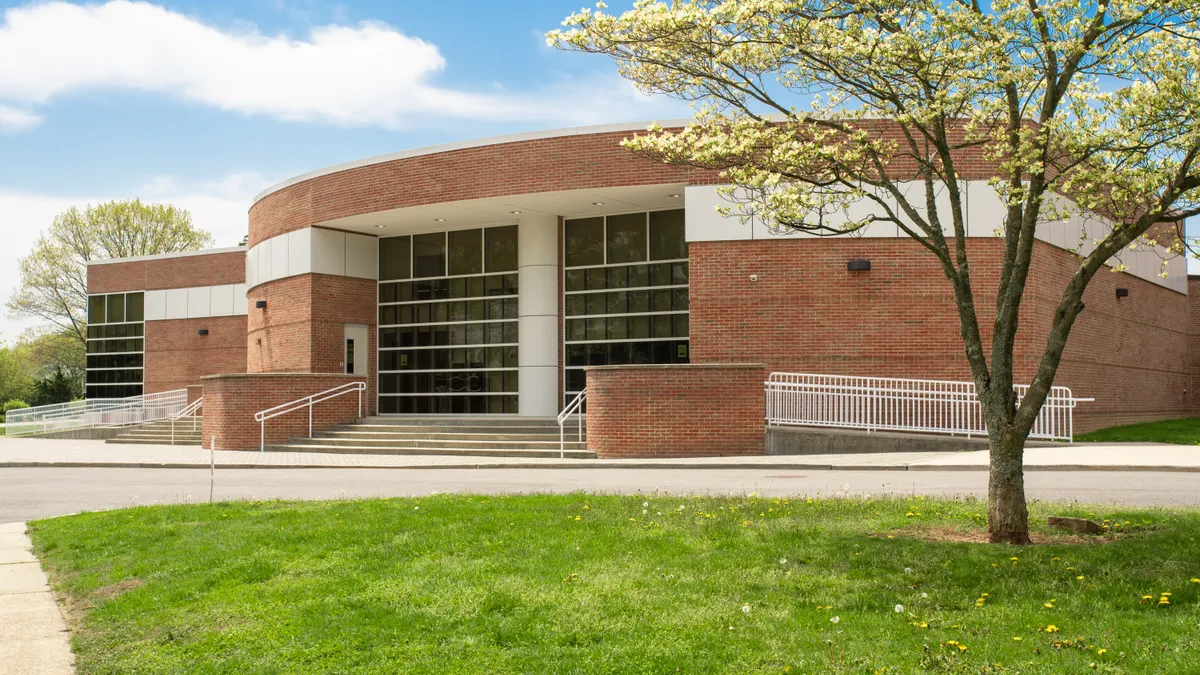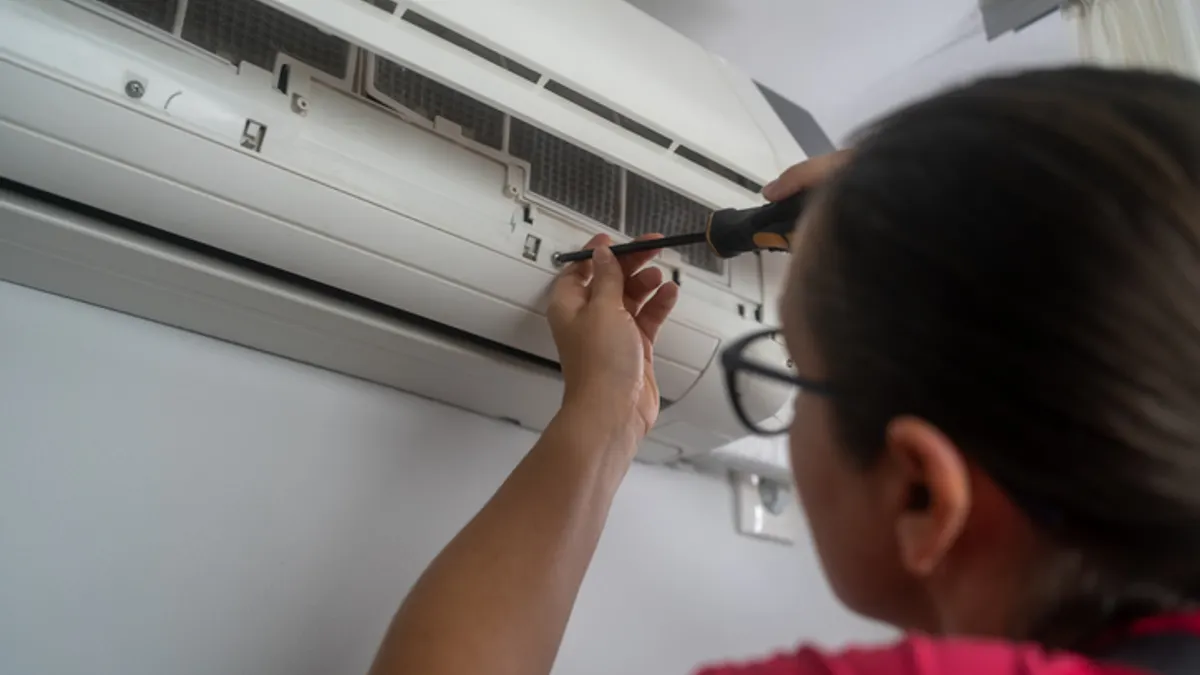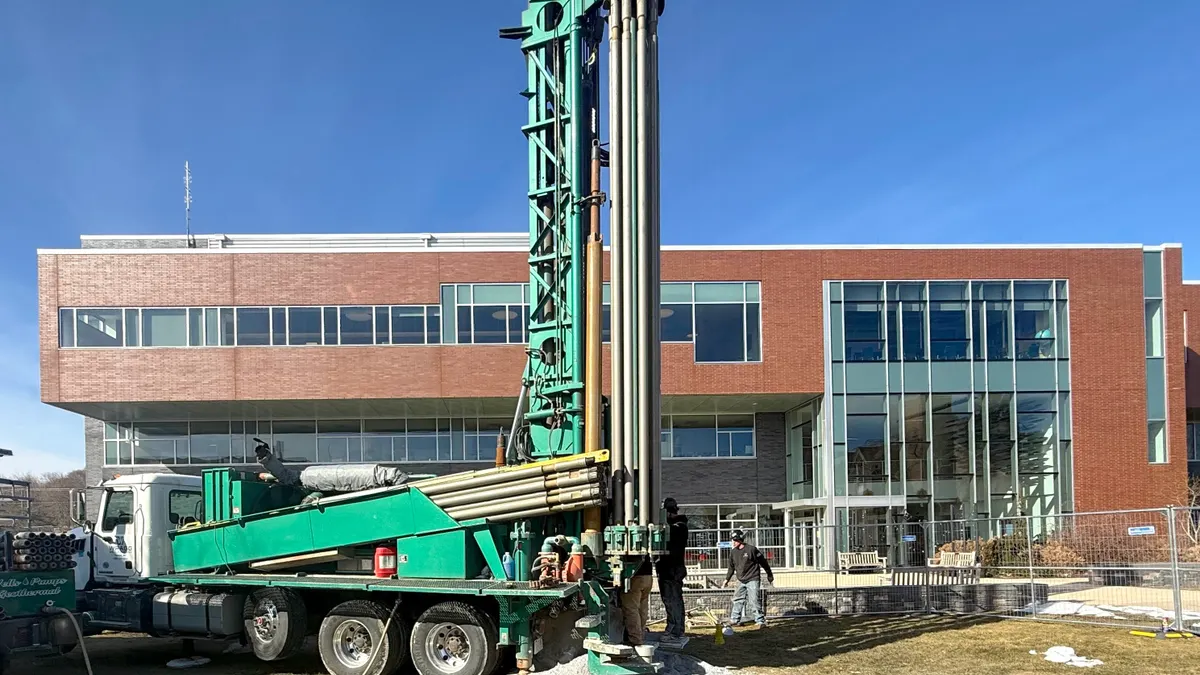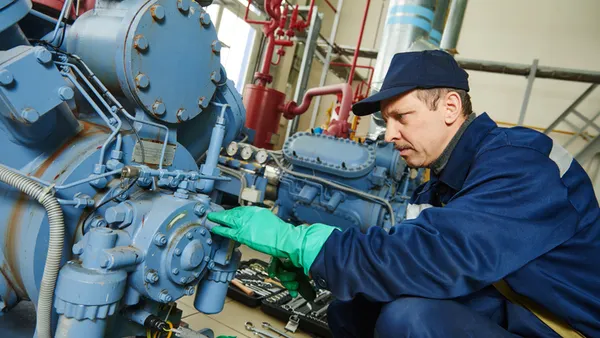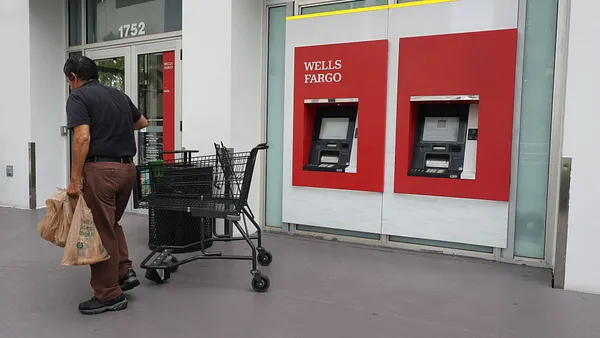Dive Brief:
- Aging infrastructure, budget constraints and staffing shortages are the top three concerns for K-12 school facilities teams in the 2024-25 school year, according to a whitepaper released Tuesday by IncidentIQ, which with Spaces4Learning surveyed 46 participants from institutions of various types and sizes.
- The average age of a U.S. school building is about 50 years. “Aging infrastructure could have a direct, exponential impact” on budgets, the whitepaper said, especially considering the costs of necessary equipment and the shorter lifespans of such equipment, such as HVAC units, air purifiers and water heaters, IncidentIQ says.
- “The combination of older buildings and limited capital improvement budgets means that it’s even more important for facilities managers to be aware of the condition of buildings and equipment, and act on potential problems before they become critical failures,” the whitepaper says.
Dive Insight:
Schools across the U.S. are experiencing an $85 billion shortfall in the funding they need to properly maintain and upgrade their buildings and equipment each year — a roughly 85% increase since 2016, according to the International WELL Building Institute’s 2021 State of Our Schools report, which is the most recent year for which the data is available. With inflation, that figure has risen to at least $98.6 billion, per the IncidentIQ report.
The company calls for comprehensive, long term infrastructure investment plans and increased budgets for capital improvements.
The report suggests the plans take a three-tiered approach: assessment, maintenance and replacement of assets. Operators should begin by evaluating the current condition of their assets and identifying high-risk areas to prioritize for replacement or maintenance attention, then create a plan for current maintenance. Finally, teams can address future replacements by establishing and incorporating end-of-life timelines into their budgets, the report says.
Delays in maintenance and repairs ranked fourth among the challenges facilities managers said they expect to face this school year, according to the report. When fixes get delayed, problems get worse and more costly and potentially reduce the efficiency and safety of equipment, the report says. Deferring maintenance can also lead to complete system failures that can disrupt school operations, pose safety hazards and result in fines from regulatory agencies.
These potential risks point to the need to prioritize preventive maintenance, which “reduces downtime and costs, takes less time than reactive maintenance, increases equipment efficiency, and can extend the life of assets,” the report states. “The primary reason for deferring maintenance is cost; however, deferring maintenance will clearly cost much more in the long run,” it states.
While a majority of respondents said they expect their budget to increase some or stay the same this school year, almost none expect their budget to increase or decrease significantly, per the report. School facilities costs, impacted by high inflation rates in recent years for commercial machinery repair and maintenance and general repair and maintenance services, are putting pressure on these stagnant budgets, per the report.
While respondents generally agreed on the importance of collecting data, they had differing opinions on which specific metrics were most important. The metric named most often was maintenance cost relative to the operating budget, followed by the number of maintenance requests, energy consumption, average response time, utility costs per square foot and equipment downtime.
Improving efficiency is the top goal for the school year survey respondents named most, followed by decreasing maintenance costs. By implementing efficient maintenance strategies, optimizing resource allocation and exploring energy-saving technologies, facilities managers can cut costs without compromising the quality of the learning environment, the report says.
An energy audit can identify low-lift initiatives that include replacing bulbs with compact fluorescent lamps, improving weatherization or changing air filters, the report says. Training employees on energy-efficient practices and altering occupant behavior to be more energy-conscious are also “easy areas to tackle,” the report says. Larger renovations and retrofit projects can contribute to savings while potentially increasing occupant comfort, the report adds, noting that operators must also understand the return on investment for these improvements to justify future projects.


